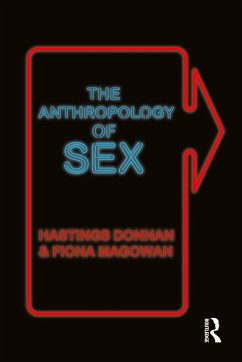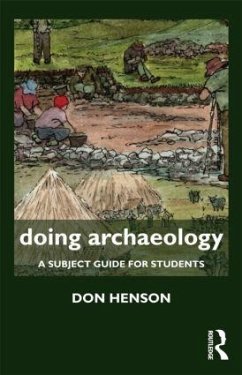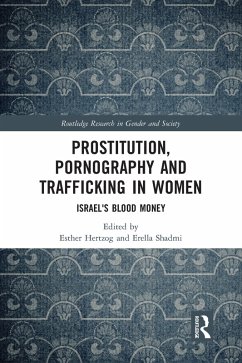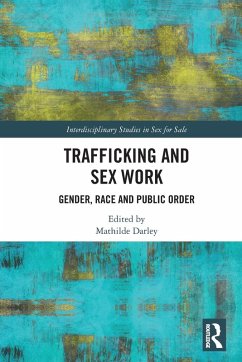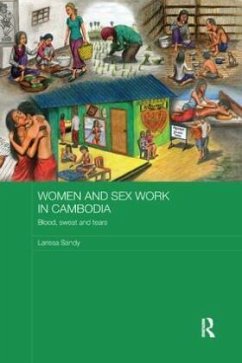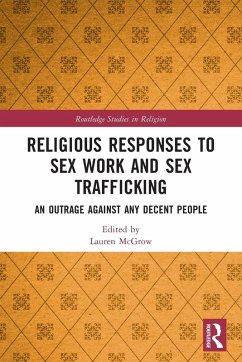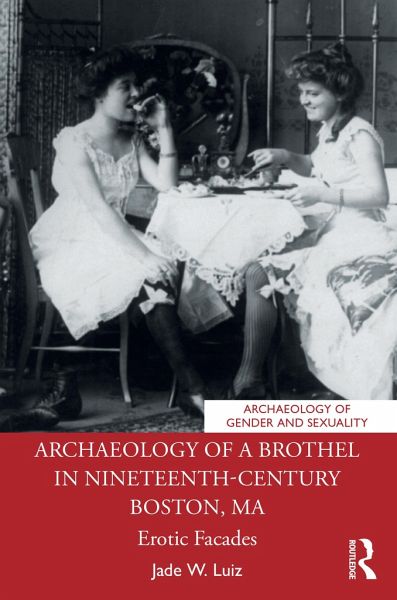
Archaeology of a Brothel in Nineteenth-Century Boston, MA
Erotic Facades
Versandkostenfrei!
Versandfertig in 6-10 Tagen
41,99 €
inkl. MwSt.
Weitere Ausgaben:

PAYBACK Punkte
21 °P sammeln!
Archaeology of a Brothel in Nineteenth-Century Boston, MA provides an accessible and thought-provoking account of the archaeological understanding of nineteenth-century prostitution in Boston, Massachusetts.The book explores how the practice of nineteenth-century sex work involved a careful construction of fantasy for brothel customers. This fantasy had the potential to provide financial stability and security for the madam of the establishment, if not for the women working for them. Employing theories of embodiment, sexuality, and an archaeology of the senses, this study of the Endicott Stree...
Archaeology of a Brothel in Nineteenth-Century Boston, MA provides an accessible and thought-provoking account of the archaeological understanding of nineteenth-century prostitution in Boston, Massachusetts.
The book explores how the practice of nineteenth-century sex work involved a careful construction of fantasy for brothel customers. This fantasy had the potential to provide financial stability and security for the madam of the establishment, if not for the women working for them. Employing theories of embodiment, sexuality, and an archaeology of the senses, this study of the Endicott Street collection contributes a new methodological and theoretical framework for studying the archaeology of prostitution across time, space, and culture. The material culture recovered from brothel sites allows exploration of both the semi-private, "behind the scenes" narrative of sex work, as well as the semi-public, eroticised "performance space" where patrons were entertained. Fewbooks on the archaeology of sex work exist and this volume will both provide an updated perspective on the history of sex work in Boston in the nineteenth century as well as tie advances in gender and embodiment theories to a compelling case study.
The book is for students and scholars of historical archaeology, nineteenth-century urban America, and gender studies. Students studying feminist theory and archaeology of the senses will also be interested in the contents.
The book explores how the practice of nineteenth-century sex work involved a careful construction of fantasy for brothel customers. This fantasy had the potential to provide financial stability and security for the madam of the establishment, if not for the women working for them. Employing theories of embodiment, sexuality, and an archaeology of the senses, this study of the Endicott Street collection contributes a new methodological and theoretical framework for studying the archaeology of prostitution across time, space, and culture. The material culture recovered from brothel sites allows exploration of both the semi-private, "behind the scenes" narrative of sex work, as well as the semi-public, eroticised "performance space" where patrons were entertained. Fewbooks on the archaeology of sex work exist and this volume will both provide an updated perspective on the history of sex work in Boston in the nineteenth century as well as tie advances in gender and embodiment theories to a compelling case study.
The book is for students and scholars of historical archaeology, nineteenth-century urban America, and gender studies. Students studying feminist theory and archaeology of the senses will also be interested in the contents.






